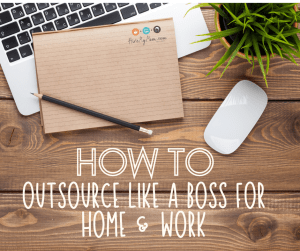Surviving Summer: 4 Tips to Stay Productive

Do you remember what it was like, waking up on the first day of summer as a kid?
The morning air was cool with a hint of the heat to come. Dew covered the grass as morning doves cooed. You were excited; excited to feel the grass on your bare feet, or play your favorite video game, or catch up with friends, or maybe even go on a big family vacation.
You felt free.
As adults, the first day of summer looks a little different. We know you’re excited to spend time with your kiddos, but there’s some apprehension because you are working from home.
How are you going to balance working with creating a summer of freedom and fun for your kids?
After working from home for several years, and with several different aged kids, we have some experience in this area. Here are our four favorite tips on how to have a productive summer while your children are home on summer break.
#1 Schedule, schedule, schedule
The number one thing we recommend is to create a schedule for your summer. Map out your vacations, meetings, and even time that you need to set aside for yourself. Let’s be honest, there are so many distractions without kids, that summertime can seem daunting.
Writing everything down on a calendar will help you and your family. In fact, you should also make a summer calendar for your kids too. Block out times when you know they will be at a friend’s house, or when they like to play outside.
If your kiddo goes to a summer camp in the morning, schedule it! If you have a really important meeting you can’t miss, schedule it! Write it all down before the summer starts, but also remember that the best laid plans will encounter problems.
Plan on revisiting your schedule once per week. Sunday nights are a great time to evaluate the coming week.
Most importantly of all, when creating your summer plan, make sure to include lots of flexibility because you never know what the day will bring!
#2 Beat the heat
You’ve heard of the afternoon slump, but did you know a summer slump exists too? The heat tends to make people lethargic, and if you already find yourself experiencing afternoon slumps no matter the season, then summer will make you even more tired.
So, beat the heat! When you’re planning activities or creating your summer schedule, keep in mind what times of day you work best and what times of day you do not.
We recommend comparing that with your child’s sleep schedules.
If you work best in the morning and your child sleeps in, plan on working in the morning so you can spend afternoons playing (or napping together!). Have a productive summer switching your normal 9-5 schedule around.
#3 On the next episode of Kid Swap…
Remember that show, Wife Swap? While it produced some interesting characters, it also gave moms across the U.S. a great idea: let’s swap kids.
Seriously, it’s that simple. On days when you really need to be productive working from home during summer, ask your neighbors to watch the kids. Then, you can watch their kids when they need it.
Maybe even plan play dates with your child’s friends so that one week the kids go to your house, and the next they are at their friend’s house. As part of your summer calendar for your kids, they are sure to love it, and you will too when you get some time to yourself to power through work.
#4 Once upon a time at the library
Sure, you’re used to home based work, but what about working at the library? Find your nearest library, and check out what is available. Some libraries offer fun summer programs with different activities. Others have rooms you can rent to work out of while your children read books. No matter what, your local library has a kid’s section that can be fun for them to work on puzzles, read books, and play while you get access to wifi and a quiet location.
When you have a stay at home mom job, summer might seem extra stressful when you think about balancing productivity with spending time with your kids. We are here to say that you can do it, and have fun in the process.
There are lots of great resources available out there to help you create a schedule, track your productivity, swap kids, and even spend some time out of the house at the local library.
Don’t be afraid to ask for help, and remember that summers aren’t about huge vacations. Your kids will thank you for the small things like a surprise popsicle from an ice cream cart on an extra hot day, or spending time at their friend’s house building blanket forts.
As a kid, summer is all about freedom and free time. As an adult, that changes a bit, but that does not mean the summer has to be less fun for you! Put these four tips to use on how to have a productive summer, and you will find yourself balancing work and fun with your children just fine!
Do you have another tip you use to stay productive when kids are home for summer break? Let us know about it!









